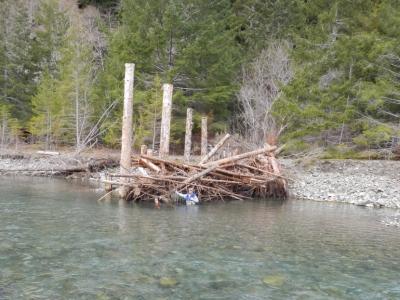Eel River Ecology, Restoration Challenges, and Opportunities
Session Coordinator:
Darren Mierau, Cal Trout
The Eel River, California’s third largest river entirely in California, offers unparalleled opportunity for ecosystem restoration and recovery of abundant salmonid populations. The Eel River once sustained huge runs of salmon and steelhead, abundant cutthroat trout, and Pacific lamprey and green sturgeon - important species for local tribes and valuable indicators of ecosystem health. But the river has been transformed during the past century and a half, from one of the most biologically rich and productive river ecosystems along the Pacific Coast to a degraded river with impaired ecosystem functions.
Restoration scientists, agency managers, Tribes, NGOs, and citizen groups have made tremendous efforts over the past decades to restore this valuable natural resource, and momentum has been building in recent years. Recent salmon and steelhead abundance trends have ticked upward, offering a glimmer of hope.
But the Eel is at an important cross-roads. To sustain and accelerate recent momentum, a landscape-scale, science-based, “all-hands-on-deck” recovery initiative is needed. We must double-down on watershed/habitat restoration, invest heavily in tidal marsh and estuarine habitat in the delta, protect water quality across the Eel’s seven sub-basins listed as sediment and temperature impaired, thoroughly analyze the feasibility of decommissioning PG&E’s Eel River Dams, and implement new water policies and guidelines to protect against excessive water diversion for cannabis cultivation.
This session will focus on key programs and initiatives brought forward by citizens, resource agencies, tribes, and non-profit groups that offer hope of restoring a wild, healthy, and resilient Eel River.
The South Fork Eel River: Recovery Opportunities in one of the North Coast’s Premier Stronghold Watersheds
Darren Mierau, Cal Trout
The Eel River Delta: Opportunities and Challenges to Restoring Critical Fisheries Habitat on a Working Landscape
Michael Bowen, California State Coastal Conservancy
Research Efforts Supporting Instream Flow Planning: Hydrology Modeling, Data Collection, and Stream Classification in the South Fork Eel River Basin
Revising Field Sampling Protocols to Enhance the Role of Geomorphic Classification in Instream Flows Studies
Colin Byrne, University of California at Davis, Department of Land, Air, & Water Resources
The Phenology of Food Webs in South Fork Eel River Tributaries: Implications for Water Management
Gabriel Rossi, University of California at Berkeley, Department of Integrative Sciences
Removing the Eel River Dams and PG&E’s Potter Valley Project to Restore a Wild and Unregulated Eel River Watershed
Scott Greacen, Friends of the Eel River

